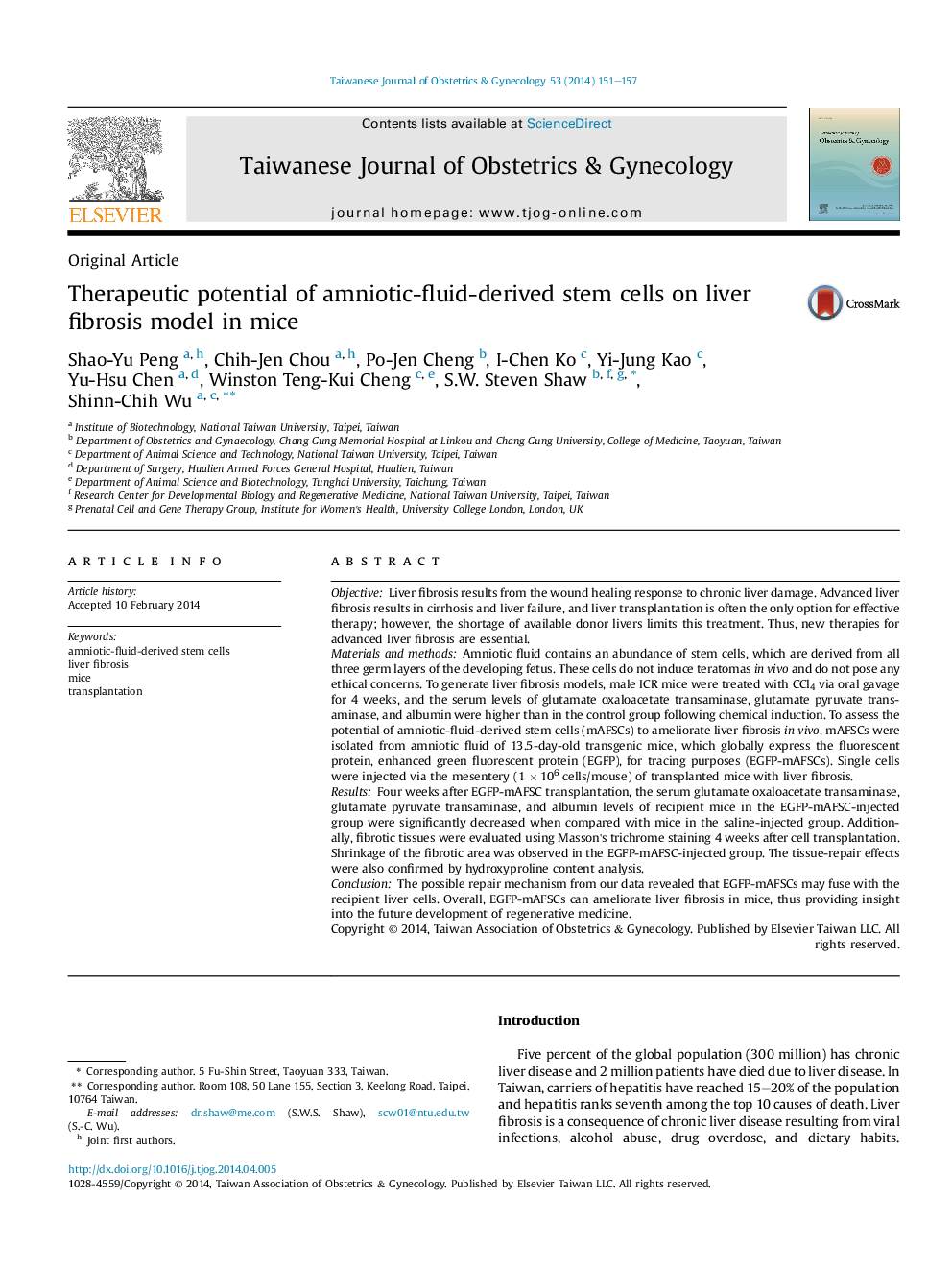| کد مقاله | کد نشریه | سال انتشار | مقاله انگلیسی | نسخه تمام متن |
|---|---|---|---|---|
| 3975117 | 1600977 | 2014 | 7 صفحه PDF | دانلود رایگان |
ObjectiveLiver fibrosis results from the wound healing response to chronic liver damage. Advanced liver fibrosis results in cirrhosis and liver failure, and liver transplantation is often the only option for effective therapy; however, the shortage of available donor livers limits this treatment. Thus, new therapies for advanced liver fibrosis are essential.Materials and methodsAmniotic fluid contains an abundance of stem cells, which are derived from all three germ layers of the developing fetus. These cells do not induce teratomas in vivo and do not pose any ethical concerns. To generate liver fibrosis models, male ICR mice were treated with CCl4 via oral gavage for 4 weeks, and the serum levels of glutamate oxaloacetate transaminase, glutamate pyruvate transaminase, and albumin were higher than in the control group following chemical induction. To assess the potential of amniotic-fluid-derived stem cells (mAFSCs) to ameliorate liver fibrosis in vivo, mAFSCs were isolated from amniotic fluid of 13.5-day-old transgenic mice, which globally express the fluorescent protein, enhanced green fluorescent protein (EGFP), for tracing purposes (EGFP-mAFSCs). Single cells were injected via the mesentery (1 × 106 cells/mouse) of transplanted mice with liver fibrosis.ResultsFour weeks after EGFP-mAFSC transplantation, the serum glutamate oxaloacetate transaminase, glutamate pyruvate transaminase, and albumin levels of recipient mice in the EGFP-mAFSC-injected group were significantly decreased when compared with mice in the saline-injected group. Additionally, fibrotic tissues were evaluated using Masson's trichrome staining 4 weeks after cell transplantation. Shrinkage of the fibrotic area was observed in the EGFP-mAFSC-injected group. The tissue-repair effects were also confirmed by hydroxyproline content analysis.ConclusionThe possible repair mechanism from our data revealed that EGFP-mAFSCs may fuse with the recipient liver cells. Overall, EGFP-mAFSCs can ameliorate liver fibrosis in mice, thus providing insight into the future development of regenerative medicine.
Journal: Taiwanese Journal of Obstetrics and Gynecology - Volume 53, Issue 2, June 2014, Pages 151–157
